
Buetas

Pictures: 13.viii.2006, 05.i.2015, 03.x.2018


Pictures: 13.viii.2006, 05.i.2015, 03.x.2018
| waterworks | interior |

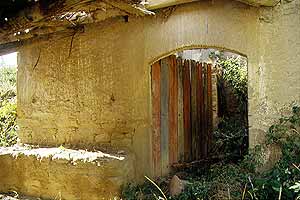
There are traces of red and blue paint on the door jambs: drawn lines and surfaces, but what exactly is not clear. In the door jambs on both sides several protective cross marks are engraved (10).
Originally the construction counted two storeys but roof and 2nd floor have given way under the strain of the years. In 2006 some beams, with part of the crane (6) were still upright, but had already fallen down in 2015.
In the main room a large bench along the back wall is taking half of the available space (5). Two thirds are occupied by the milling stool with two pairs of stones. The section closest to the door probably carried some other kind of machinery but from the poor remains I couldn't make out what it was.


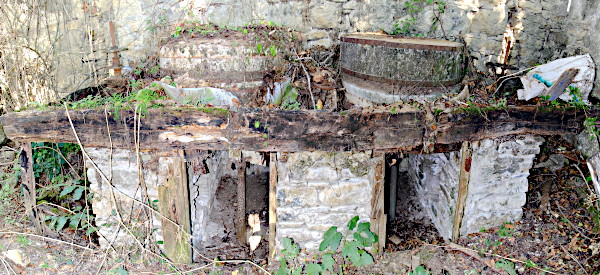

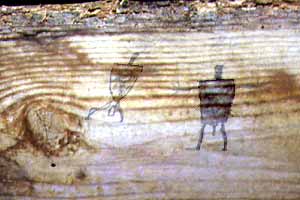

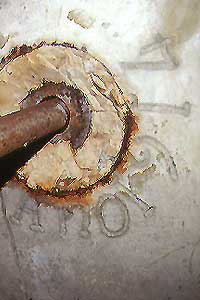

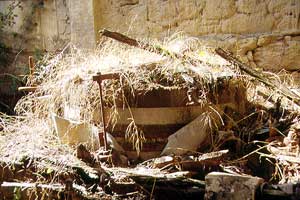
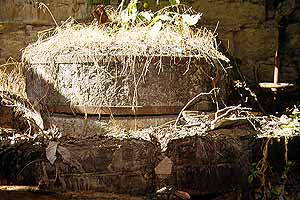
| waterworks | interior |